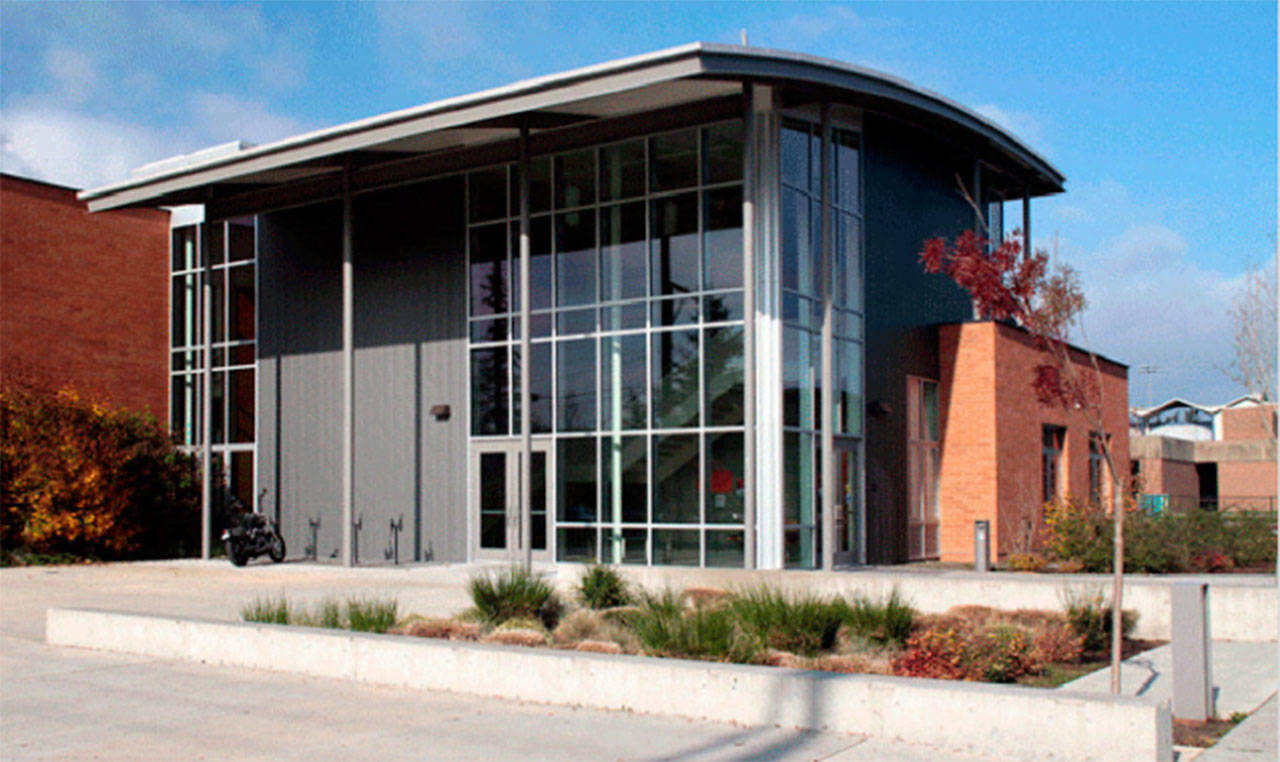With high schoolers returning to in-person learning next week, Thursday’s Bainbridge school board meeting allowed staff to provide updates, context and improvements to its reopening plans.
BHS Principal Kristen Haizlip talked about the return of her students, along with those at Eagle Harbor High School. 1,100 students between the two will be split up between a.m. and p.m. cohorts Mondays through Thursdays. No meals will be provided, and all gatherings like assemblies are prohibited.
“We have our classrooms set up, hallways are ready to go,” Haizlip said. “We have four distinct buildings with lots of outside area as part of our campus. We’re really grateful for that outside space at this time. When students are leaving classrooms, they’re headed to the nearest outside exit door to travel outside to their next classroom space.”
Haizlip mentioned that BHS has brought back clubs and activities onto campus over the past few weeks. She said they’re hoping to have music programming and additional clubs and activities return in the next few weeks.
As BISD Superintendent Peter Bang-Knudsen provided his reopening update, he started off by noting how Kitsap County is now below 75 cases per 100,000 cases over the last two weeks, meaning the county is now under a “high level” of COVID-19 activity, per state guidelines. On Bainbridge, that number is even lower at 24 per 100,000.
Woodward Middle School students were back on campus this week after a positive case at the school led to the district to conduct remote learning briefly. Staff revised strategies for transitioning students between classes, which resulted in a 94 percent attendance rate this past week. District-wide, there are no positive cases or close contacts for students or staff.
Regarding vaccine availability, Bang-Knudsen said the district is working with the city, the health district and OSPI to have the infrastructure in place when they become available. He mentioned that WMS could be a possible vaccine site and that 8% of staff have self-reported that they are fully vaccinated (two doses).
“From the state perspective, they’re saying…three to four to five weeks out; there appears to be some real hope in terms of the pipeline,” Bang-Knudsen said.
He also mentioned that the district is still seeking substitute teachers. The district has met with local Rotary Club members about their interests, many of whom have already been vaccinated, Bang-Knudsen said.
Public comments
During the public comment portion of the meeting, commenters centered on transparency and improvements to the district’s reopening plans, and one high schooler who opposed going back to in-person learning.
“I believe that the reopening of the high school is premature,” Bainbridge High School junior Sawyer Kibler said. “In-person learning for high schoolers should not be prioritized over the health and safety of faculty and students. I understand that you are opening (based on) the guidelines of the health department, however, I feel it is necessary to wait until at least the teachers are vaccinated.
“I understand that the COVID cases are currently in decline in the county, but do we really want to risk it when we’re so close to vaccinations? High schoolers are old enough to take care of themselves and manage their online learning,” Kibler went on to say.
Marci Tarre, a parent of a seventh-grader, said “as we move into this new phase of reopening there is an even greater need for transparency, strong leadership and outside-the-box thinking. The time is now before the likely arrival and spread of potentially devastating new variants for working together to achieve a responsible reopening of our schools. Information is power, as you know, and we demand to be empowered to make the best decisions possible for our families.”
Keith Brofsky, a parent of two high schoolers, had a few ideas. “I would like to see asymptomatic testing of students and staff, and it could be implemented,” he said. “It would offer another layer of protection.”
Later in the meeting, Bang-Knudsen said asymptomatic testing is expensive, would require outside assistance and would be logistically challenging.
“We’re pretty stretched thin right now in terms of we’re using our own internal staff to do the testing that we have…There are schools across the state and across the country that have been opened for months without asymptomatic testing.”
Regarding the recent positive COVID case at WMS, Brofsky said, “The notifying procedure that schools used to follow for cases such as head lice would give a family enough information to know if they should be tested or quarantine, and this would be yet another layer helping to prevent further outbreaks.”
Brofsky said he is starting to have second thoughts about having his kids use the hybrid learning model. “They finally have gotten used to the online curriculum, and they’re hearing that the classrooms are cold and chilly, and they’re still staring at a screen.”
He had another idea on allowing teachers and students to quarantine responsibly.
“Currently, if a student is not in class, they miss the only source of direct instruction from the teacher, and this is a critical importance for high school students,” he said. “Students will be tempted to push the safe boundaries with quarantine in order to ensure that they don’t miss a critical class. Simply recording the lectures would allow students to stay home, gather the necessary information and keep the rest of the community safe.”


